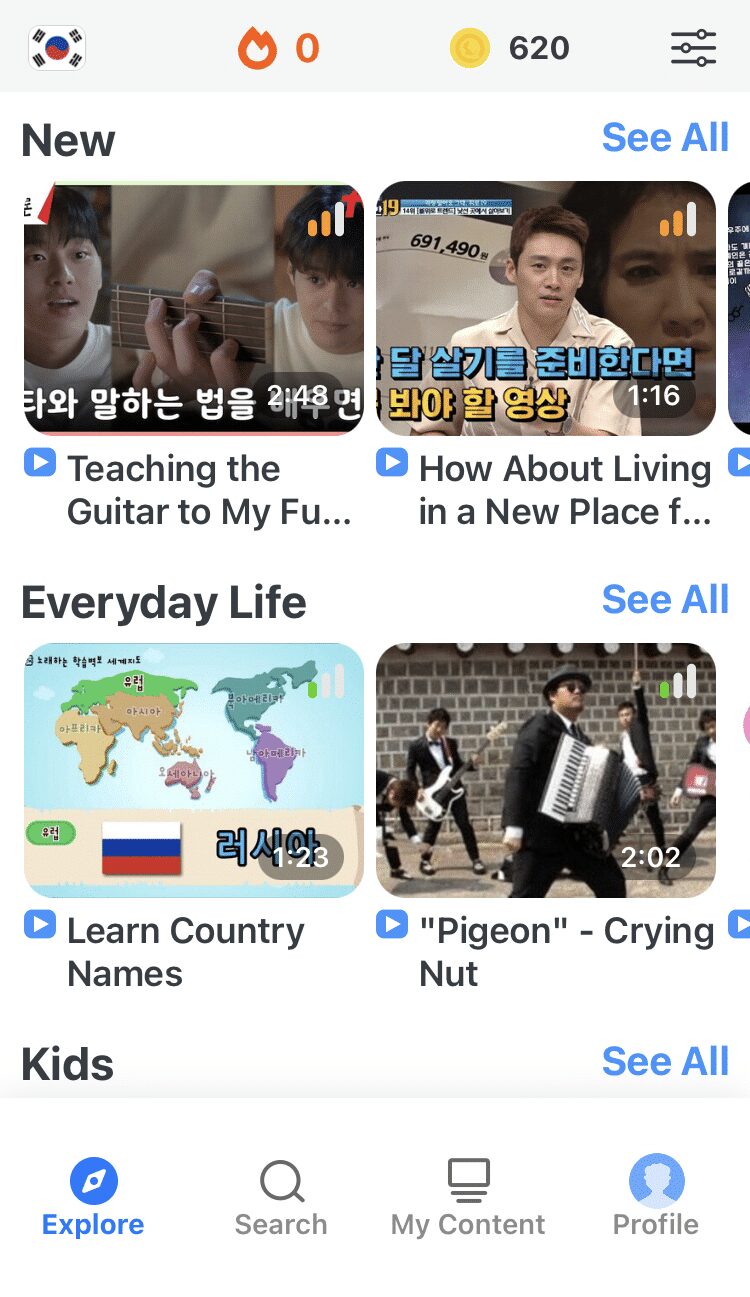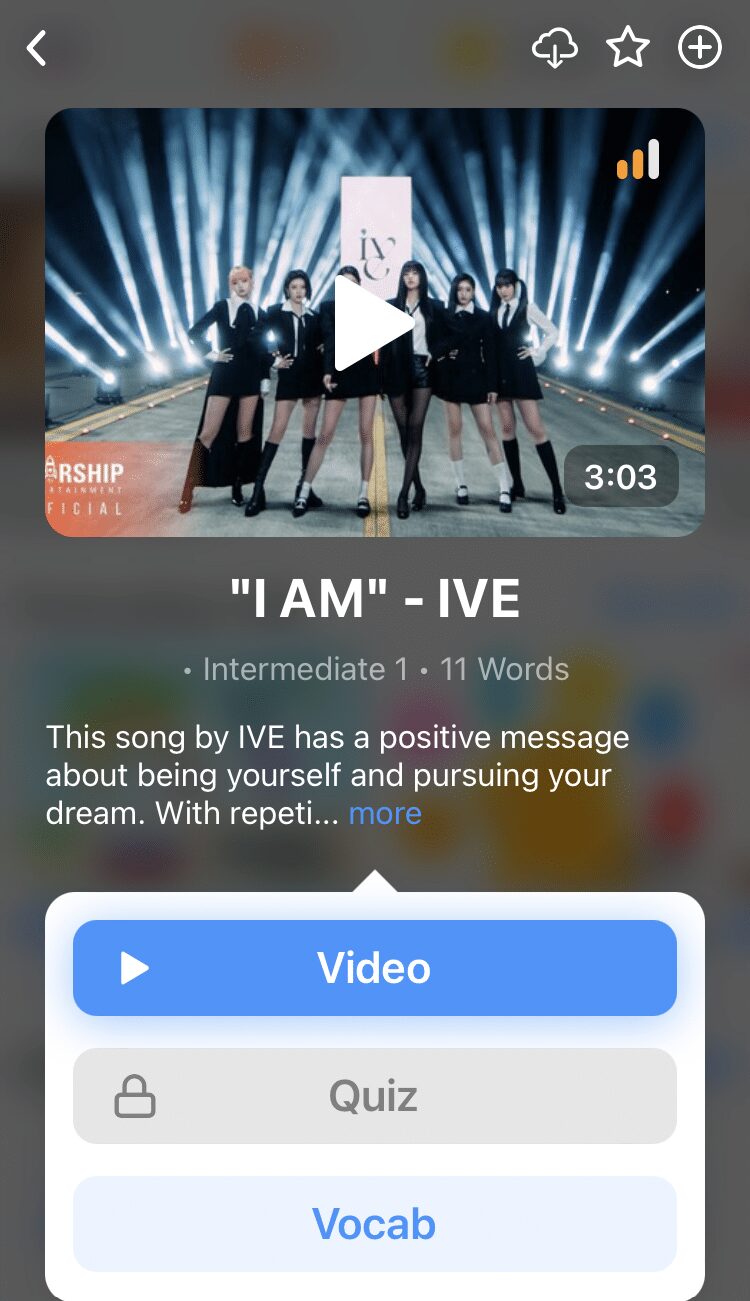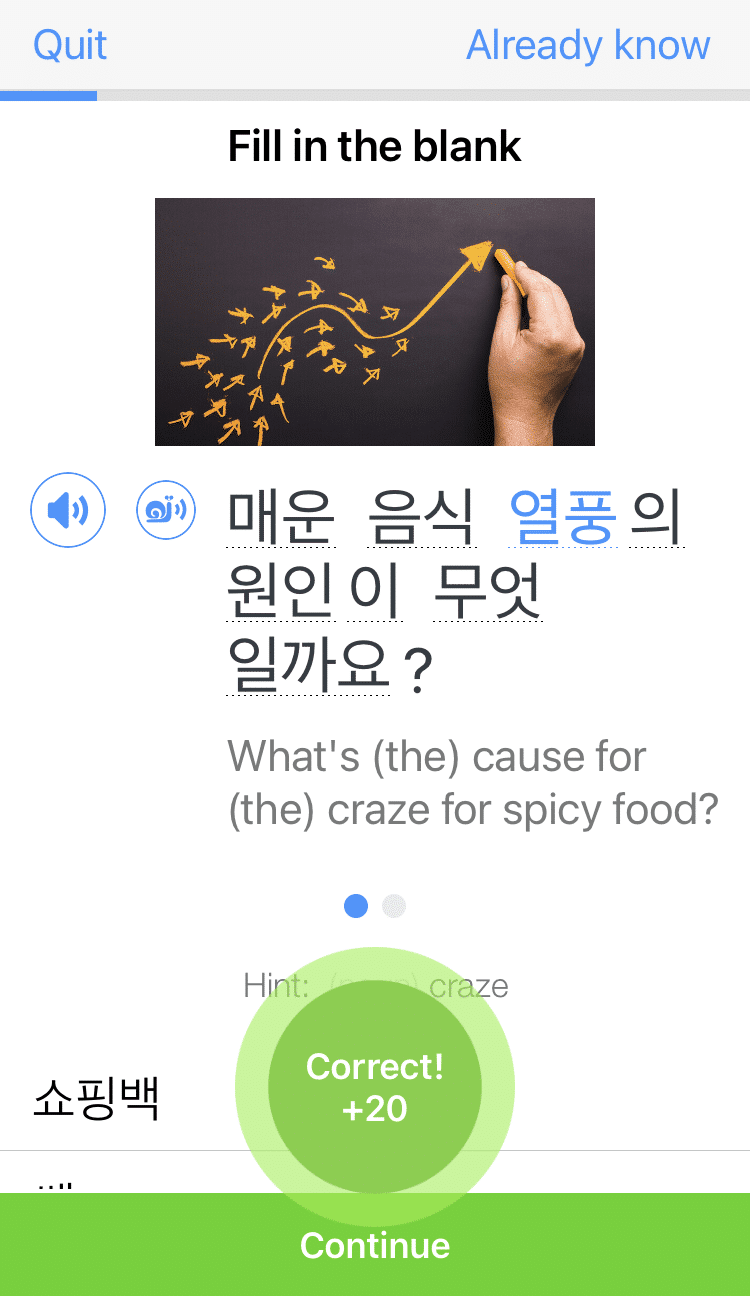The First 128 Korean Words You Should Learn

Looking to boost your Korean vocabulary? In this post, you’ll find the most useful Korean words and phrases.
You’ll learn an assortment of basic terms related to family, numbers, greetings, honorifics, questions, Korean holidays, days of the week, months of the year, common adjectives, verbs and even Korean slang.
You can get started with this video lesson and then find additional easy Korean words in the post below:
Download: This blog post is available as a convenient and portable PDF that you can take anywhere. Click here to get a copy. (Download)
Basic Korean Greetings and Courtesies
| 안녕하세요 | An-nyeong-ha-se-yo | Hello/Goodbye |
| 감사합니다 | Kam-sa-ham-ni-da | Thank you |
| 천만에요 | Cheon-mahn-eh-yo | You’re welcome |
| 잠시만요 | Jam-shi-mahn-yo | Excuse me |
| ...주세요 | ... Ju-seh-yo | Give me... |
| 죄송합니다 | Chwae-song-ham-ni-da | I’m sorry |
| 예 | Ye | Yes |
| 아니요 | A-ni-yo | No |
While Koreans aren’t generally your outgoing personalities who’ll casually strike up a conversation with strangers, they’re actually very warm and welcoming—especially when formally introduced by a common friend.
As a guest to the culture, you have to observe common courtesies. Learning a language becomes a lot easier when you have plenty of opportunities to practice listening to the ways native speakers talk.
FluentU takes authentic videos—like music videos, movie trailers, news and inspiring talks—and turns them into personalized language learning lessons.
You can try FluentU for free for 2 weeks. Check out the website or download the iOS app or Android app.
P.S. Click here to take advantage of our current sale! (Expires at the end of this month.)
Seeing these words in use will help you understand better when and how to actually use them yourself. Also check out this post for some Korean greetings, and check out this post for how to say good morning in Korean specifically.
Basic Korean Questions
| 누구? | Noo-goo? | Who? |
| 뭐? | Mwo? | What? |
| 언제? | Eon-jae? | When? |
| 어디? | Eoh-dee? | Where? |
| 어떻게? | Eoh-tteo-keh? | How? |
| 왜? | Weh? | Why? |
| 정말 | Jeong-mal? | Really? |
| 어떻게 지내세요? | Eoh-tteo-keh ji-nae-se-yo? | How are you? |
| 이름이 뭐예요? | Ee-reu-mi mwo-ye-yo? | What’s your name? |
| 어디 출신이세요? | Eoh-dee chool-shin-i-seh-yo? | Where are you from? |
| 이거 뭐예요? | Ee-geo mwo-ye-yo? | What's this? |
| 뭐라고 했어요? | Mwo-ra-go haess-eoh-yo? | What did you say? |
Make sure that when you’re using these question words you add on -yo at the end to make them polite. If you’re not sure how to make phrases polite, make sure you brush on Korean formality.
Korean Family Words
| 가족 | Gah-jok | Family | 아내 | Ah-nae | Wife |
| 친척 | Chin-cheok | Relatives | 할아버지 | Ha-ra-beo-ji | Grandfather |
| 부모님 | Boo-mo-nim | Parents | 할머니 | Hal-meo-ni | Grandmother |
| 아버지 | Ah-beo-ji | Father | 삼촌 | Sam-chon | Uncle |
| 어머니 | Eoh-meo-ni | Mother | 고모 | Goh-mo | Aunt on father's side |
| 남편 | Nam-pyeon | Husband | 이모 | Ee-mo | Aunt on mother's side |
Korean culture is steeped in Confucian philosophy, and filial piety is one of its basic tenets. Family is big in the culture and absolute respect and consideration are given to elders.
Koreans have specific terms for the different folks that occupy the different branches and levels of the family tree. For example, as you can see above, there are terms for people in your wife’s father’s side and different terms for people on her mother’s side.
Essential Korean Honorifics
| 님 | Nim | 언니 | Uhn-nee |
| 씨 | Shi | 누나 | Noo-na |
| 아저씨 | Ah-jeo-sshi | 동생 | Dong-saeng |
| 아주머니 | Ah-joo-mo-ni | 선배 | Seon-bae |
| 오빠 | Oh-ppa | 후배 | Hoo-bae |
| 형 | Hyung |
There’s a premium placed on seniority in Korean culture and, in addition to age, one’s social status also has a very strong bearing in social interactions. Deference and respect are shown to and expected by elders, bosses, government officials, corporate bigwigs, etc.
Knowing all that, here are the honorifics that you can use to refer people above, beside and below you in the social ladder:
님 (Nim)
Nim is used to speak formally to persons older than you. It’s usually used after professions, like teachers ( 선생님 — Seon-saeng-nim) or presidents/CEOs ( 회장님 — Hwe-jang-nim).
씨 (Shi)
If nim is used for professions or titles, shi is used for specific names. It’s Korea’s version of the English “Mr.” or “Ms.” or the Japanese –san, as in “Daniel-san.”
So if a person’s first name is 태원 (Tae-won), it becomes 태원씨 (Tae-won-shi). Always remember to attach the honorific after the first name, not the last name.
아저씨 (Ah-jeo-sshi)
This is given to middle-aged (40s to late 50s) men and is similar to the English “mister.”
아주머니 (Ah-joo-mo-ni)
This one’s given to middle-aged women, a little bit more formal than 아줌마 (Ah-jum-ma), as a sign of respect for somebody older than you. Because this is the equivalent of the English “ma’am,” some might protest its application on them, saying, “Excuse me, I’m not as old as you think.”
오빠 (Op-pa)
Girls use this to refer to an “older brother.” But the meaning of oppa has evolved over time, now including older guys who are just friends. It can also now mean boyfriend. Watch any Korean drama and you’ll most probably hear oppa used this way.
형 (Hyung)
This is what boys call guys who are older than them. It means “older brother” but its use has since been expanded to include guys who are your friends, but older. The emphasis is on the word “older” rather than on “brother.” School seniors are considered as hyung by the freshmen class.
언니 (Uhn-nee)
Girls call other girls who are older than them uhnnie. It means “older sister,” but can be used in a friendship setting.
누나 (Noo-na)
This is the male version uhnnie and “older sister.” It’s how boys show deference and endearment for their older friends who are females.
동생 (Dong-saeng)
If you’re an oppa/hyung or uhnnie/noona, the person calling you that is your dongsaeng. The term can be used for male and female friends younger than you.
선배 (Seon-bae)
In the context of work or school, seonbae are people who have seniority. Maybe they have more experience in the profession, have a higher rank or came to the company earlier than you. These people wield plenty of respect and influence in the organization.
후배 (Hoo-bae)
A hoobae is a junior person in an organization. They’re younger, less experienced and are relatively new to the group. They’re expected to speak politely to their seonbae.
Depending on where a person is on the totem pole, he can be a seonbae for one and a hoobae for another.
Common Korean Adjectives
| 큰 | Keun | Big | 긴 | Gihn | Long |
| 작은 | Ja-geun | Small | 짧은 | Jjal-beun | Short |
| 늙은 | Neul-geun | Old | 좁은 | Jo-beun | Narrow |
| 새로운 | Sae-ro-oon | New | 넓은 | Neol-beun | Wide |
| 이른 | Ee-reun | Early | 같은 | Ga-teun | Same |
| 늦은 | Neu-jeun | Late | 다른 | Da-reun | Different |
For more Korean adjectives, check out this post.
Common Korean Verbs
| 먹다 | Meok-da | To eat | 놀다 | Nol-da | To play |
| 마시다 | Ma-shi-da | To drink | 누르다 | Nu-reu-da | To press |
| 자다 | Jah-da | To sleep | 달리다 | Dal-lee-da | To run |
| 주다 | Joo-da | To give | 쓰다 | Sseu-da | To write |
| 가다 | Gah-da | To go | 읽다 | Ig-da | To read |
Learn some more Korean verbs in this post. The book “500 Basic Korean Verbs” also has more action words to add to your Korean.
Korean Numbers
| 하나 | Ha-na | 1 | 여섯 | Yeo-seot | 6 |
| 둘 | Dool | 2 | 일곱 | Eel-gop | 7 |
| 셋 | Seht | 3 | 여덟 | Yeo-deol | 8 |
| 넷 | Neht | 4 | 아홉 | Ah-hop | 9 |
| 다섯 | Da-seot | 5 | 열 | Yeol | 10 |
Learning to count in Korean can be a bit tricky! Korea has two number systems, and they’re used for different purposes.
The native Korean number system below is used when you want to count something, like “one apple,” “two bananas” and “10 fingers.” Age, which is very important in Korean society, uses this counting system. The number system only goes as high as 99.
The next number system, a Chinese (Sino) influenced one, is used when you want to use figures for things like telephone numbers, addresses, dates and money.
Unlike the previous system that only goes as high as 99, these numbers go to trillions and beyond. So let’s say you have trillions of apples—you’d switch to this system to count them. Here are the first 10 Sino-Korean numbers:
| 일 | Eel | 1 | 육 | Yook | 6 |
| 이 | Ee | 2 | 칠 | Chil | 7 |
| 삼 | Sahm | 3 | 팔 | Pahl | 8 |
| 사 | Sah | 4 | 구 | Goo | 9 |
| 오 | Oh | 5 | 십 | Ship | 10 |
Korean Days of the Week
| English | Korean | Romanization |
|---|---|---|
| Monday | 월요일 | wuh-ryo-il |
| Tuesday | 화요일 | hwa-yo-il |
| Wednesday | 수요일 | soo-yo-il |
| Thursday | 목요일 | mog-yo-il |
| Friday | 금요일 | geum-yo-il |
| Saturday | 토요일 | toh-yo-il |
| Sunday | 일요일 | i-ryo-il |
There’s just seven of days of week, so memorizing them shouldn’t take a week (Plus, they all end in -yo-il).
The names of the days of the week have Chinese origins and taken from the names of the five elements in nature and two heavenly bodies—the sun and the moon.
Korean Months of the Year
| 1월 | Ir-wol | January | 7월 | Chir-wol | July |
| 2월 | Ee-wol | February | 8월 | Pal-wol | August |
| 3월 | Sam-wol | March | 9월 | Goo-wol | September |
| 4월 | Sa-wol | April | 10월 | Shi-wol | October |
| 5월 | Oh-wol | May | 11월 | Ship-ir-wol | November |
| 6월 | Yoo-wol | June | 12월 | Ship-ee-wol | December |
The Korean months of the year also have some Chinese origins. Wol is the Sino-Korean word for “month,” and it’s prefixed by the Sino-Korean numbers you learned previously:
Korean Holidays and Celebrations
| 새해 | Sae-hae | New Year's Day | 제헌절 | Je-heon-jeol | Constitution Day |
| 설날 | Seol-lal | New Year | 광복절 | Gwang-bok-jeol | Liberation Day |
| 삼일절 | Sam-il-jeol | Independence Movement Day | 추석 | Chu-seok | Thanksgiving |
| 어린이날 | Eoh-ree-nee-nal | Children's Day | 개천절 | Gae-cheon-jeol | National Foundation Day |
| 부처님 오신 날 | Boo-cheo-nim Oh-shin-nal | Buddha's Birthday | 한글날 | Han-geul-nal | Hangul Day |
| 현충일 | Hyeon-choong-il | Memorial Day | 크리스마스 | Keu-ree-seu-ma-seu | Christmas |
Koreans hold annual celebrations that reflect their history, values and beliefs as a nation. Here are some of them:
새해 (Sae-hae) — New Year’s Day
This takes place on January 1st and is typically celebrated like other countries around the globe: with lots of food, drinks, music and fireworks. It’s also known as Shinjeong, which is the solar new year in the Gregorian calendar, as opposed to the lunar new year (see below).
설날 (Seol-lal) — Lunar New Year
Seolnal is more culturally significant for Korea—a celebration based on the lunar calendar which has only 354 days to the year. The Lunar New Year is usually a three-day affair, covering the day before Seolnal, the day itself, and the day after.
Koreans often go back to their hometowns bringing gifts for parents and paying respects to their ancestors. Hanbok, the traditional garment is worn on the day itself. Tables get loaded with food which almost always includes rice cake soup and fried pancakes.
삼일절 (Sam-il-jeol) — Independence Movement Day
In the afternoon of March 1, 1919, Korean activists declared “everlasting liberty” from Japanese occupiers who controlled the Korean peninsula at that time. The independence document touted Korea’s 5,000-year-long history and their right to freely co-exist with all humankind.
어린이날 (Eoh-ree-nee-nal) — Children’s Day
Every Korean child is excited for the fifth of May celebrations. They get their gifts they’ve been hinting for the longest time. There could also be money involved. Mom and dad also take them to amusement parks, zoos, malls and museums to give them the time of their lives.
부처님 오신 날 (Boo-cheo-nim Oh-shin-nal) — Buddha’s Birthday
Buddhism is one of the major religions in Korea. It’s celebrated on the eighth day of the fourth month of the Lunar calendar.
현충일 (Hyeon-choong-il) — Memorial Day
June 6 honors the ultimate sacrifice made by the men and women who fought in the Korean wars. The president leads the rites at the National Cemetery in Seoul. The flag is flown at half-mast and at 10 AM, sirens ring all across the country and followed by a minute of prayerful silence.
제헌절 (Je-heon-jeol) — Constitution Day
A country cannot be strong without a codified system of laws. July 17, 1948 is hailed as the day when Korea’s fundamental law of the land was promulgated. Bad news though: the day is a working holiday.
광복절 (Gwang-bok-jeol) — Liberation Day
Koreans raise the flag with a little bit more pride on this day. August 15 commemorates Korea’s liberation from Japan, after decades-long of struggle and turmoil. This is the day the empire of Japan unconditionally surrendered to the Allied forces in World War II.
추석 (Chu-seok) — Korean Thanksgiving
There’s American Thanksgiving, then there’s Chuseok or Korean Thanksgiving—a three-day celebration which happens around September or October. Koreans flock back to their hometowns and spend time with the family. Special food, like songpyeon, rice dough filled with chestnuts, red beans and sesame seeds, is prepared.
Chuseok literally means “Autumn eve.” It’s a harvest festival, an homage to Korea’s roots as an agricultural nation.
개천절 (Gae-cheon-jeol) — National Foundation Day
October 3 each year commemorates the mythical founding of the first Korean Kingdom by Dangun, known as the “Grandson of Heaven.” Legend has it that Dangun is the son of Hwanung who descended from heaven and landed on Baekdu Mountain.
The holiday is celebrated with big fireworks displays that are always a crowd-pleaser. If you want a prime viewing spot, make your way to Yeouido Han River Park ahead of the crowd.
한글날 (Han-geul-nal) — Hangul Day
This is the only celebration of its kind, commemorating a writing system. Hangul came to replace the Chinese characters prevalent in the 1400’s. King Sejong the Great appointed a committee to create a writing system that can easily be used by his subjects. From that committee came forth Hangul, a fully-fledged alphabet and one of the most scientific writing systems known today.
October 9, Hangul Day, celebrates this unparalleled accomplishment that shone a bright light on Korea’s distinctiveness as a nation.
크리스마스 (Keu-ree-seu-ma-seu) — Christmas
Christianity is one of the big religions in Korea. Christmas is celebrated in Korea just as it’s celebrated around the world, with Christmas songs, presents and fine food. You’ll be surprised to learn though that Christmas is celebrated more by couples than by families!
Korean Colors
| 흰색 | Heen-saek | White | 초록색 | Cho-rohk-saek | Green |
| 검정색 | Geom-jeong-saek | Black | 갈색 | Gal-saek | Brown |
| 파란색 | Pa-ran-saek | Blue | 주황색 | Joo-hwang-saek | Orange |
| 빨간색 | Bbal-gan-saek | Red | 분홍색 | Boon-hong-saek | Pink |
| 노란색 | Noh-ranh-saek | Yellow | 보라색 | Bo-ra-saek | Purple |
Just like in other cultures, colors are highly symbolic and have traditional meanings in Korean culture. White, black, red, blue and yellow are the five traditional colors of Korea.
These colors are seen in the Korean flag, and are rich with history, religion and meaning. Here are the colors in Korean:
흰색 (Heen-saek) — White
Only the noble class and royalty used to be able to wear colored clothing. The masses, who couldn’t afford those expensive color dyes, wore white hanboks. And so the Koreans came to be known as “white-clad people.”
The color, which occupies the biggest real estate in the Korean flag, is also associated with purity, peace and patriotism.
검정색 (Geom-jeong-saek) — Black
Black symbolizes death and winter. It also symbolizes the end of a cycle.
파란색 (Pa-ran-saek) — Blue
In the Korean flag, blue represents the yin component of the Yin-yang. It symbolizes feminine energy—cool and refreshing.
빨간색 (Bbal-gan-saek) — Red
Red represents fire. It signifies the masculine yang component of Yin-yang—creative, passionate and alive. Today, red is worn during sporting events to show team support.
노란색 (No-ran-saek) — Yellow
Yellow represents a complete balance of the Yin-yang forces. Yellow symbolizes the sun, the center of everything. And being the “center,” it also symbolizes the beginning or starting point of knowledge and wisdom.
초록색 (Cho-rohk-saek) — Green
Green symbolizes fertility, new beginnings and abundance. Traditionally, green used to be considered a variation of the color blue.
갈색 (Gal-saek) — Brown
주황색 (Joo-hwang-saek) — Orange
분홍색 (Boon-hong-saek) — Pink
보라색 (Bo-ra-saek) — Purple
Korean Slang
| 대박! | Dae-bak! | Awesome! |
| 콜! | Kol! | Let's do it! |
| 아싸! | Ah-ssa! | Nice! |
| 파이팅! | Pah-ee-ting! | C’mon! |
대박! (Dae-bak!) — Awesome!
When something positive or good has just happened, you yell this in celebration. Say, you just passed a test or successfully flirted with your crush, you say, “Daebak!”
콜! (Kol!) — Let’s do it!
Poker players say “Call!” to signify that they’re still in the game. Koreans use it to affirm that they’re up for doing something. For example you can say to a friend, “Shall we eat pizza and watch ‘Big Bang Theory’ tonight?” And they can say “Kol!”
아싸! (Ah-ssa!) — Nice!
Like daebak, this one’s another celebratory expression. So be ready with “Ahssa!” when something nice happens, like when you just got tickets to see your favorite K-pop group.
파이팅! (Pah-ee-ting!) — C’mon!
“Fighting!” You’re egging somebody to do something (hopefully not something illegal). You’re bucking him up, assuring him, “You can do it!” “Go, go, go!”
For some more Korean slang check out this post, and for Korean text slang, check out this one. Also check out this video for more on how to use 콜!
And so we wrap up this one here. There’s a lot to absorb in this post, so keep on coming back to this blog to review.
‘Til the next one!
Download: This blog post is available as a convenient and portable PDF that you can take anywhere. Click here to get a copy. (Download)
And One More Thing...
If you enjoyed this post, you're already halfway to having the time of your life learning Korean with FluentU!
FluentU makes it possible to learn with K-pop videos, funny commercials, entertaining web series and more. Just a quick look will give you an idea of the variety of FluentU videos on offer:

FluentU really takes the grunt work out of learning languages, leaving you with nothing but engaging, effective and efficient learning. It's already hand-picked the best videos for you (which are organized by level and topic), so all you have to do is simply choose any video that strikes your fancy to get started.
Each word in the interactive captions comes with a definition, audio, image, example sentences and more.

Access a complete interactive transcript of every video under the Dialogue tab, and easily review words and phrases from the video under Vocab.

You can use FluentU’s unique Quiz Mode to learn the vocabulary and phrases from the video through fun questions.

FluentU keeps track of what you're learning, and tells you exactly when it's time for review, giving you a 100% personalized experience.
Review sessions use video context to help embed the words in your memory.
Start using the FluentU website on your computer or tablet or, better yet, download the FluentU app from the iTunes or Google Play store. Click here to take advantage of our current sale! (Expires at the end of this month.)








